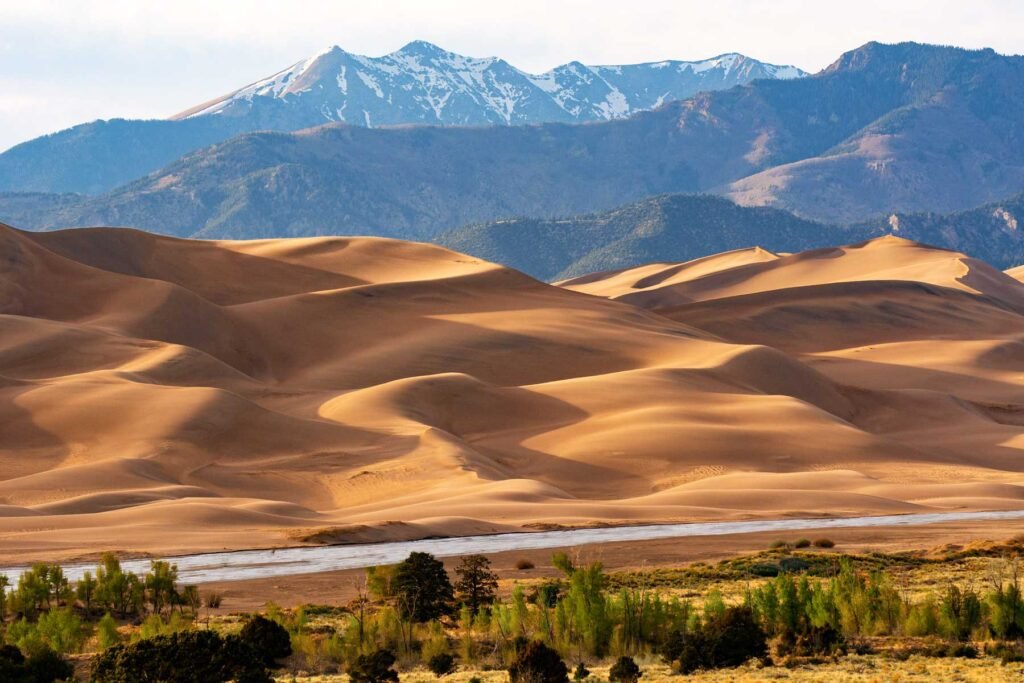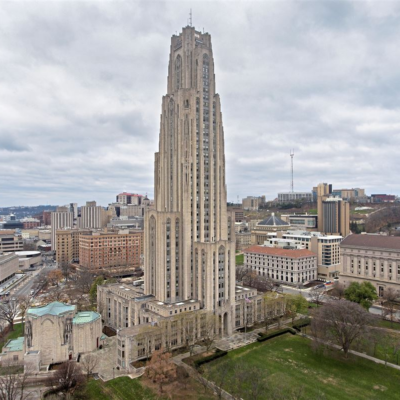If you’re looking for a place where mountains meet sand, and adventure meets peace, Great Sand Dunes National Park in Colorado is a must-visit. This hidden gem in southern Colorado offers an experience unlike any other in the U.S. With the tallest sand dunes in North America, sparkling alpine lakes, and rich biodiversity, it’s a playground for nature lovers, thrill-seekers, and curious travelers.
In this complete guide, we’ll explore everything you need to know about Great Sand Dunes National Park, including its unique landscape, best things to do, when to visit, and travel tips. Whether you’re planning a family vacation or a solo trip, this guide has you covered.
What Makes Great Sand Dunes National Park Special?
Great Sand Dunes National Park and Preserve is located near Alamosa in southern Colorado. What makes it truly unique is the contrast between its towering sand dunes and the surrounding alpine wilderness.
Here are some fast facts:
- Dune height: Up to 750 feet tall — the tallest in North America
- Area covered: Over 149,000 acres
- Established: Became a national park in 2004
- Ecosystems: Includes grasslands, wetlands, alpine lakes, forests, and tundra
What sets this park apart is that it’s not just a desert — it’s a combination of sand, water, mountains, and sky.
A Brief History of the Sand Dunes
The dunes began forming over 400,000 years ago, as sand and soil from the surrounding mountains were carried by wind and water. Over time, wind trapped the sand at the base of the Sangre de Cristo Mountains. The result? A massive dune field that looks like something straight out of a desert movie scene.
Before it became a national park, the area was home to Native American tribes, Spanish explorers, and early settlers. Many Native Americans considered the dunes sacred, and today, the park works closely with tribal leaders to preserve cultural sites.
Top Things to Do in Great Sand Dunes National Park

1. Sandboarding and Sandsledding
This is the most popular activity in the park. Visitors can rent special boards or sleds from nearby shops in Alamosa or Blanca. Then, climb the dunes and ride down like you’re surfing a sandy wave. Medano Creek at the base of the dunes is a great starting point.
Tip: Regular snow sleds won’t work. Use specially designed sand sleds or boards.
2. Hiking the Dunes
If you’re up for a physical challenge, hiking to the top of Star Dune or High Dune on First Ridge will reward you with breathtaking views. There are no marked trails on the dunes, so you can roam freely.
- Star Dune: Highest dune, 750 feet tall
- High Dune: Slightly easier and offers panoramic views
3. Medano Creek Fun
In late spring and early summer (May to early June), Medano Creek flows strongly, creating a natural beach at the foot of the dunes. It’s perfect for splashing, building sandcastles, and cooling off.
4. Stargazing
Because of its remote location and low light pollution, Great Sand Dunes National Park is a designated International Dark Sky Park. On clear nights, the sky lights up with stars, and you can often see the Milky Way.
5. 4WD Off-Roading
If you have a 4WD vehicle, you can explore the Medano Pass Primitive Road, which leads into the Sangre de Cristo Mountains. It’s a rugged, scenic route, especially beautiful in the fall.
6. Hiking and Backpacking
Beyond the dunes, the park offers forest trails, waterfalls, and alpine lakes. Popular hikes include:
- Mosca Pass Trail – A 6-mile round trip through forests and meadows
- Zapata Falls – A short hike outside the park that leads to a hidden waterfall
- Sand Ramp Trail – A longer backpacking route along the dunes’ eastern edge
Best Time to Visit Great Sand Dunes National Park

Each season offers something different:
- Spring (April–June): Best time for Medano Creek. Pleasant weather and blooming wildflowers
- Summer (July–August): Hot midday temperatures on the dunes. Mornings and evenings are best
- Fall (September–October): Cool temperatures, changing colors, fewer crowds
- Winter (November–March): Snow on the dunes. Peaceful and quiet, but cold
Important: Sand temperatures can reach 150°F (65°C) in summer afternoons. Visit early or late in the day to avoid heat.
Wildlife and Nature
Great Sand Dunes isn’t just about sand. The park is home to:
- Black bears
- Elk and mule deer
- Mountain lions (rarely seen)
- Kangaroo rats and other small mammals
- Over 200 bird species
- Endemic insects found nowhere else
You’ll also find diverse plant life, from cottonwoods and aspens to desert grasses and alpine wildflowers.
Camping and Lodging
1. Piñon Flats Campground
- Located inside the park
- Open from April through October
- Offers views of the dunes and access to hiking trails
- Reservations are required in peak season via Recreation.gov
2. Backcountry Camping
Permits are available for backcountry sites, especially along Sand Ramp Trail and in the mountain wilderness area.
3. Nearby Hotels and Cabins
If you prefer comfort over camping, check nearby towns like:
- Alamosa
- Mosca
- Blanca
- Crestone
How to Get There
Great Sand Dunes National Park is located in southern Colorado.
- Nearest town: Alamosa (about 35 miles away)
- From Denver: Around 4 hours (230 miles)
- From Colorado Springs: About 3 hours (165 miles)
- Airports: Denver International (DEN) or Alamosa Regional Airport (ALS)
Driving Tip: Use Highway 150 or County Road 6 depending on your route. Roads are well marked.
Travel Tips for a Great Visit
- Start Early: Beat the heat and the crowds
- Stay Hydrated: Bring plenty of water
- Footwear Matters: Barefoot is fun, but hot sand can burn. Closed sandals or shoes work well
- Watch the Weather: Afternoon storms are common in summer
- Pack Layers: It can be hot during the day and cold at night
- Respect Wildlife and Nature: Follow Leave No Trace principles
Photography Tips
- Golden Hour: Sunrise and sunset provide the best lighting
- Dune Shadows: Use shadows to highlight the textures and patterns
- Night Shots: Bring a tripod for astrophotography
Popular photo spots include:
- Star Dune summit
- Medano Creek reflections
- Dunes with mountain backdrops
Nearby Attractions
If you have extra time, check out:
- Zapata Falls: A 30-foot waterfall hidden in a rocky crevice
- Colorado Gators Reptile Park: A quirky spot in nearby Mosca
- San Luis Valley Museum: Learn about local history and culture
- Rio Grande Scenic Railroad (in Alamosa): Great for families
Final Thoughts: Why You Should Visit Great Sand Dunes National Park
Great Sand Dunes National Park is a rare and magical place. Few parks offer such a variety of experiences — from sliding down towering sand dunes to hiking alpine trails and watching the stars come alive. Whether you’re an adventurer, a photographer, or just someone seeking peace and beauty, this Colorado gem will leave a lasting impression.
Do Follow USA Glory On Instagram
Read Next – 5 Rooftop Pools You Can Visit in Las Vegas






